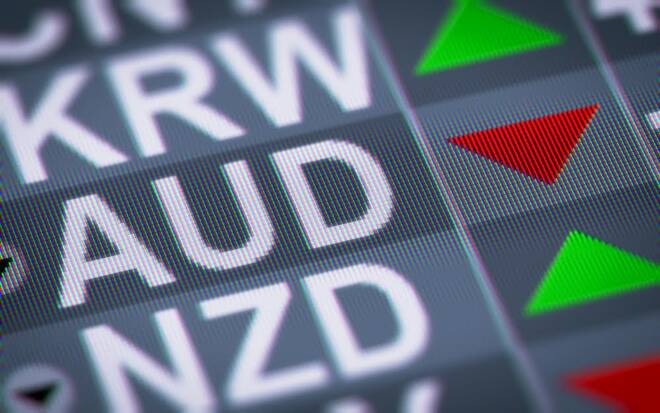Advertisement
Advertisement
Asia-Pacific Currencies Weekly Recap: High-Flying Aussie, Kiwi Drilled Lower Amid Bond Market Rout
By:
Investors are selling bonds in anticipation of higher inflation, driving up interest rates while making the U.S. Dollar a more attractive asset.
The U.S. Dollar rose against the Asia-Pacific currencies last week, lifted by an increase in U.S. bond yields, which drove down demand for the Japanese Yen and the higher-risk Australian and New Zealand Dollars.
Government bonds, and particularly U.S. Treasuries, have become the focal point of markets globally. Traders have moved aggressively to price in earlier monetary tightening than the Federal Reserve and other central banks have signaled, Reuters said.
Bond yields have climbed this year on the outlook for massive fiscal stimulus amid continued ultra-easy monetary policy, led by the United States. At this time last year, more U.S. fiscal stimulus on top of the already existing loose Fed monetary policy, would’ve sent the U.S. Dollar tumbling. In fact, most forecasts since late last year highlighted these two reasons as the key factors that would keep the pressure on the greenback.
However, with the U.S. economy strengthening, investors now believe that cheap money and more stimulus would speed up the economic recovery, leading to a jump in inflation. Investors are selling bonds in anticipation of higher inflation, driving up interest rates while making the U.S. Dollar a more attractive asset.
Furthermore, rising yields have dampened the appeal of higher risk assets, particularly the Australian and New Zealand Dollar, which are closely linked to overpriced commodities.
Japanese Yen
The Dollar/Yen gained last week, touching its highest level since August 28. Both the dollar and yen are considered safe-haven currencies, but the Yen tends to decline when U.S. yields rise, the dollar tends to strengthen.
Essentially, it was the widening spread between U.S. Government bond yields and Japanese Government bond yields that made the U.S. Dollar a more attractive investment.
Last week, the USD/JPY settled at 106.549, up 1.125 or +1.07%.
Australian Dollar
The Australian Dollar took a hit last week, drilled lower from multi-year peaks as a rout in bond markets spread to other risk assets, spurring the country’s central bank to intervene to stem a savage selloff in government debt.
The Aussie had been flying high throughout the week as it jumped the .8000 barrier for the first time since February 2018, but reality came back with a vengeance when investors started to dump higher risk commodities and equities.
Last week, the AUD/USD settled at .7704, down 0.0165 or -2.10%.
At one point on Friday, Australian 10-year bond futures were down as much as 23 ticks at an 11-month low of 98.0450, before bouncing to 98.2600. That still left them nursing losses of 30 ticks for the week, the sharpest drop since mid-2015, according to Reuters.
The selling pressure became so intense the Reserve Bank of Australia (RBA) launched an unscheduled offer to buy A$3 billion ($2.36 billion) in three-year debt. That seemed to calm markets a little and three-year yields eased back to 0.127% from 0.157%.
Markets were also wagering the RBA might have to hike rates as early as next year, even when policy makers have said no move was likely until 2024 at the earliest.
New Zealand Dollar
The New Zealand Dollar posted a volatile two-sided trade last week before settling sharply lower. The Kiwi rallied to a multi-year high early in the week after the Reserve Bank of New Zealand (RBNZ) kept monetary policy on hold and said inflation and employment will remain below its targets in the medium term.
The RBNZ also expressed some caution about the outlook, which may have disappointed some traders who expected central bankers to acknowledge a recent improvement in economic data.
The Kiwi plunged late in the week along with the other higher risk assets after a surge in Treasury yields drove investors into the U.S. Dollar.
Last week, the NZD/USD settled at .7233, down 0.0064 or -0.88%.
For a look at all of today’s economic events, check out our economic calendar.
About the Author
James Hyerczykauthor
James Hyerczyk is a U.S. based seasoned technical analyst and educator with over 40 years of experience in market analysis and trading, specializing in chart patterns and price movement. He is the author of two books on technical analysis and has a background in both futures and stock markets.
Advertisement
